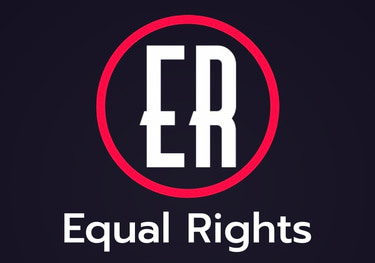The Role of Policy in Bridging Climate Action and Social Equity
Climate change is not just an environmental issue but a profound social challenge.
Kylo B Ciao
10/9/2024
The Role of Policy in Bridging Climate Action and Social Equity
Climate change is not just an environmental issue but a profound social challenge.
It disproportionately affects marginalized communities, exacerbating existing inequalities. Integrating social equity into climate action plans is essential for creating comprehensive solutions that address both environmental and social justice.
This article examines how policymakers can achieve this integration and the benefits of such an approach.
Understanding the Intersection of Climate Action and Social Equity
Climate Change and Social Inequities
Vulnerability of Marginalized Communities:
Health Impacts: Marginalized communities often have limited access to healthcare and live in areas more prone to environmental hazards, resulting in greater health disparities.
Economic Disparities: Economic disadvantages make it harder for these communities to recover from climate-related disasters.
Infrastructure Inequities: Poor infrastructure in marginalized areas increases vulnerability to climate impacts such as flooding and extreme heat.
Exacerbation of Inequities:
Climate change can exacerbate existing social inequities, making it crucial to incorporate social justice into climate policies.
Policy Approaches to Integrating Social Equity in Climate Action
1. Inclusive Policy Development
Stakeholder Engagement:
Community Involvement: Engaging marginalized communities in the policy development process ensures that their specific needs and perspectives are addressed.
Collaborative Decision-Making: Forming partnerships with community organizations, local governments, and other stakeholders to develop inclusive policies.
Transparent Processes:
Ensuring transparency in decision-making processes to build trust and accountability among all stakeholders.
2. Equitable Resource Allocation
Targeted Investments:
Directing climate action investments towards marginalized communities to address infrastructure deficits and improve resilience.
Prioritizing funding for projects that offer dual benefits of climate mitigation and social equity, such as affordable, energy-efficient housing.
Financial Support:
Providing grants, subsidies, and low-interest loans to support climate adaptation and mitigation efforts in underserved communities.
3. Education and Capacity Building
Community Education Programs:
Implementing educational initiatives to raise awareness about climate change and its impacts among marginalized communities.
Empowering communities with knowledge and tools to participate in climate action.
Skills Training:
Offering training programs to build local capacity for sustainable practices and green jobs, fostering economic empowerment.
4. Health and Environmental Justice
Health Equity:
Integrating health considerations into climate policies to address the specific vulnerabilities of marginalized populations.
Expanding access to healthcare services and ensuring that climate adaptation plans include health impact assessments.
Environmental Justice:
Enforcing regulations that prevent environmental degradation in marginalized communities.
Promoting clean energy solutions that reduce pollution and improve living conditions in affected areas.
5. Inclusive Urban Planning
Sustainable Housing:
Promoting the development of affordable, sustainable housing in urban areas to reduce the carbon footprint and improve living standards.
Ensuring that urban planning policies address the needs of low-income and marginalized communities.
Green Infrastructure:
Investing in green infrastructure projects, such as parks and green roofs, in underserved areas to enhance resilience and provide recreational spaces.
Benefits of Integrating Social Equity into Climate Action
1. Enhanced Resilience
Community Resilience:
Strengthening the resilience of marginalized communities to climate impacts reduces overall societal vulnerability.
Empowering communities to be proactive participants in climate action fosters a more resilient society.
Holistic Solutions:
Addressing both environmental and social issues creates more comprehensive and effective solutions to climate change.
2. Economic Opportunities
Job Creation:
Developing green jobs and sustainable economic opportunities in marginalized communities promotes economic growth and reduces poverty.
Training programs for green industries can provide new career paths and enhance economic mobility.
Sustainable Development:
Equitable climate policies promote sustainable development that benefits all segments of society, ensuring long-term social and environmental health.
3. Social Cohesion
Inclusive Policies:
Policies that consider the needs of all community members promote social cohesion and reduce social tensions.
Transparent and inclusive processes build trust between communities and policymakers.
Community Empowerment:
Empowering marginalized communities to take part in climate action fosters a sense of ownership and responsibility, strengthening social bonds.
Integrating social equity into climate action policies is not just a moral imperative but a practical necessity for achieving sustainable and resilient communities.
Policymakers must prioritize inclusive processes, equitable resource allocation, education, health, and environmental justice to bridge the gap between climate action and social equity.
By doing so, we can create a future where all communities are empowered to thrive in the face of climate change, ensuring a just and equitable world for generations to come.
